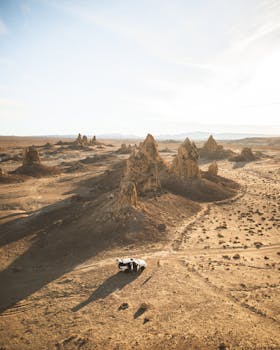
The Dalai Lama: A Spiritual Lineage Through History – From Gedun Drupa to Tenzin Gyatso
The Dalai Lama, a title synonymous with Tibetan Buddhism and spiritual leadership, holds a unique place in global culture. More than just a religious figure, the Dalai Lama is a symbol of peace, compassion, and resilience. But who are these spiritual leaders, and what is the history of this remarkable lineage? This article explores the lives and legacies of all 14 Dalai Lamas, from the first, Gedun Drupa, to the current incumbent, Tenzin Gyatso, providing insight into their contributions and the evolution of the institution itself. This exploration will delve into key aspects of their lives, including their political roles, spiritual teachings, and the challenges they faced, covering aspects such as the Dalai Lama reincarnation process, the Tibetan government in exile, and the ongoing debate surrounding the succession.
The First Dalai Lama: Gedun Drupa (1391-1474)
The story begins with Gedun Drupa, a highly revered scholar and monk who lived in the 15th century. While not initially titled the Dalai Lama, he is recognized retrospectively as the first in the lineage. He established the Tashi Lhunpo Monastery, a significant center of Gelugpa Buddhism, setting the stage for the future Dalai Lamas. Gedun Drupa’s immense knowledge and influence laid the foundation for the institution that would evolve over the centuries. His legacy is one of scholarly achievement and monastic reform, making him a crucial figure in understanding the origins of the Dalai Lama title.
The Early Dalai Lamas: Establishing the Lineage
The next few Dalai Lamas – Gedun Gyatso, Yeshe Gyatso, Sonam Gyatso, and Yonten Gyatso – solidified the lineage and expanded the influence of the Gelug school of Tibetan Buddhism. These figures consolidated power and established the Dalai Lama as a powerful spiritual and political leader within Tibet. Their reigns saw the growth of monastic institutions, the patronage of the arts, and the strengthening of ties with other religious and political centers.
Key Achievements of Early Dalai Lamas:
- Establishment of Monasteries: Significant monastic centers were built and expanded under their rule, becoming vital hubs for Buddhist study and practice.
- Patronage of the Arts: These Dalai Lamas fostered a flourishing of Tibetan art, literature, and culture, leaving behind a rich legacy of artistic and intellectual achievements.
- Political Consolidation: They deftly navigated the complex political landscape of Tibet, gradually consolidating power and influence.
The Middle Dalai Lamas: Navigating Political Complexity
The middle Dalai Lamas, including Lobsang Gyatso, Tsangyang Gyatso, and Kelzang Gyatso, faced a dynamic interplay of spiritual and political responsibilities. Their reigns involved navigating internal power struggles and external influences, shaping Tibet’s relationship with neighboring empires. Tsangyang Gyatso, for instance, is known as a poet-Lama, showcasing a less conventional aspect of the Dalai Lama’s role, highlighting the multifaceted nature of the office.
The Later Dalai Lamas: Modern Challenges and Global Influence
The later Dalai Lamas, particularly the 13th and 14th, faced unprecedented challenges, primarily the communist takeover of Tibet in 1950. Thubten Gyatso, the 13th Dalai Lama, witnessed the growing influence of China and the increasing threat to Tibetan autonomy.
The 14th Dalai Lama: Tenzin Gyatso (1935-Present)
Tenzin Gyatso, the current and 14th Dalai Lama, embodies the global face of Tibetan Buddhism and its message of peace. His life has been marked by the establishment of the Tibetan government in exile in India after fleeing Tibet, advocating for Tibetan autonomy, and receiving the Nobel Peace Prize in 1989. He is renowned for his teachings on compassion, non-violence, and interfaith dialogue, earning him international respect and admiration.
Key Contributions of the 14th Dalai Lama:
- Advocacy for Tibetan Autonomy: He has tirelessly championed the cause of Tibetan autonomy and human rights for the Tibetan people.
- Global Peace Activism: His commitment to peace and non-violence has made him a global icon and an influential figure in promoting world peace.
- Interfaith Dialogue: He has been a strong advocate for interfaith dialogue and understanding, emphasizing the common ground shared by various religious traditions.
- Promotion of Secular Ethics: He actively promotes the importance of secular ethics, emphasizing the importance of compassion and ethical conduct irrespective of religious belief.
The Future of the Dalai Lama Lineage
A significant question revolves around the future of the Dalai Lama lineage. The 14th Dalai Lama has expressed concerns about the continuation of the reincarnation process due to increasing Chinese interference. The debate on the future of the institution and the selection process of the next Dalai Lama is a significant issue, impacting both spiritual and political aspects of Tibetan culture.
The legacy of the 14 Dalai Lamas is a testament to the enduring power of spiritual leadership and the resilience of a culture facing adversity. From Gedun Drupa's scholarly foundation to Tenzin Gyatso's global advocacy, the Dalai Lama lineage has shaped the religious and political landscape of Tibet and influenced global dialogue on peace, compassion, and human rights. The continued relevance of the Dalai Lama in the 21st century is a testament to the enduring power of his message and the enduring legacy of Tibetan Buddhism. Understanding the history of each Dalai Lama provides a deeper appreciation for the ongoing complexities surrounding this influential figure and the future of Tibetan Buddhism.



















